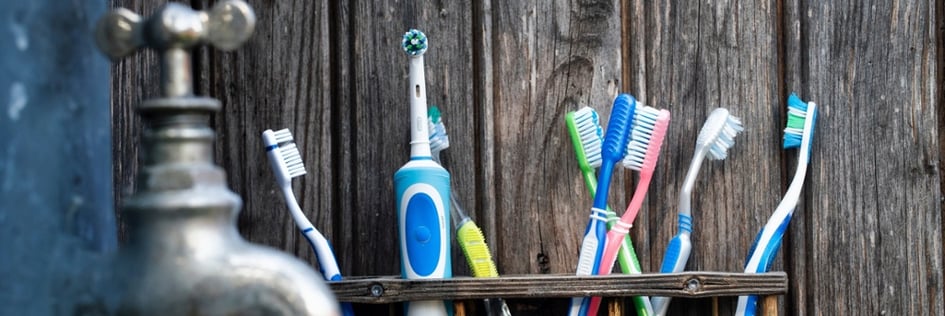Should I use an electric toothbrush?
Leslie Scott-Smith, dental hygienist | Mar 3, 2020
Cavity-free dental visits don’t just happen by chance, and taking care of your teeth before you visit the dentist can be one of the best things you can do for your oral health. Brushing your teeth twice a day is the best habit to keep (or start) for improving oral health. But is it time to get the electric toothbrush?
 If you use a manual toothbrush properly, it does a great job. However, sometimes it can be hard to use a manual toothbrush well or reach every tooth.
If you use a manual toothbrush properly, it does a great job. However, sometimes it can be hard to use a manual toothbrush well or reach every tooth.
Electric toothbrushes are a great option if a manual toothbrush is difficult to manipulate. If you notice a manual toothbrush isn’t as effective, switching to electric could be a proactive step to keeping your teeth clean and healthy. But be gentle—if you’re a vigorous brusher to begin with, an electric toothbrush could actually cause more damage. Consult with your dentist if you’re unsure.
If you decide to switch to an electric toothbrush, several different models at different price points are available, all with different features. For most people, I recommend a Sonicare or Oral-B electric toothbrush.
- Sonicare brush heads are shaped like a regular toothbrush and move back and forth in a typical brushing motion.
- Oral-B brush heads are round and spin in a circle.
Both options do the brushing for you. Just gently move the brush along the gum line throughout your mouth.
Sonicare and Oral-B toothbrushes also have built-in two-minute times, helping you brush effectively. Just like regular toothbrushes, brush heads should be replaced every three months or if you’ve been ill.
If you do purchase an electric toothbrush, make sure to charge it fully before use, keep it clean, and position the toothbrush in your mouth before starting… or toothpaste will be everywhere!
